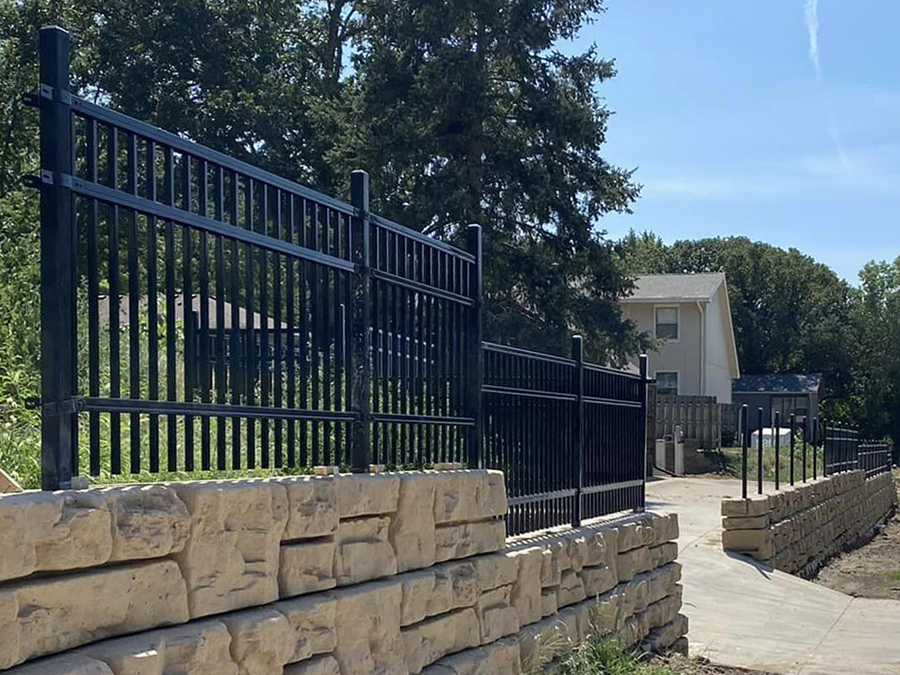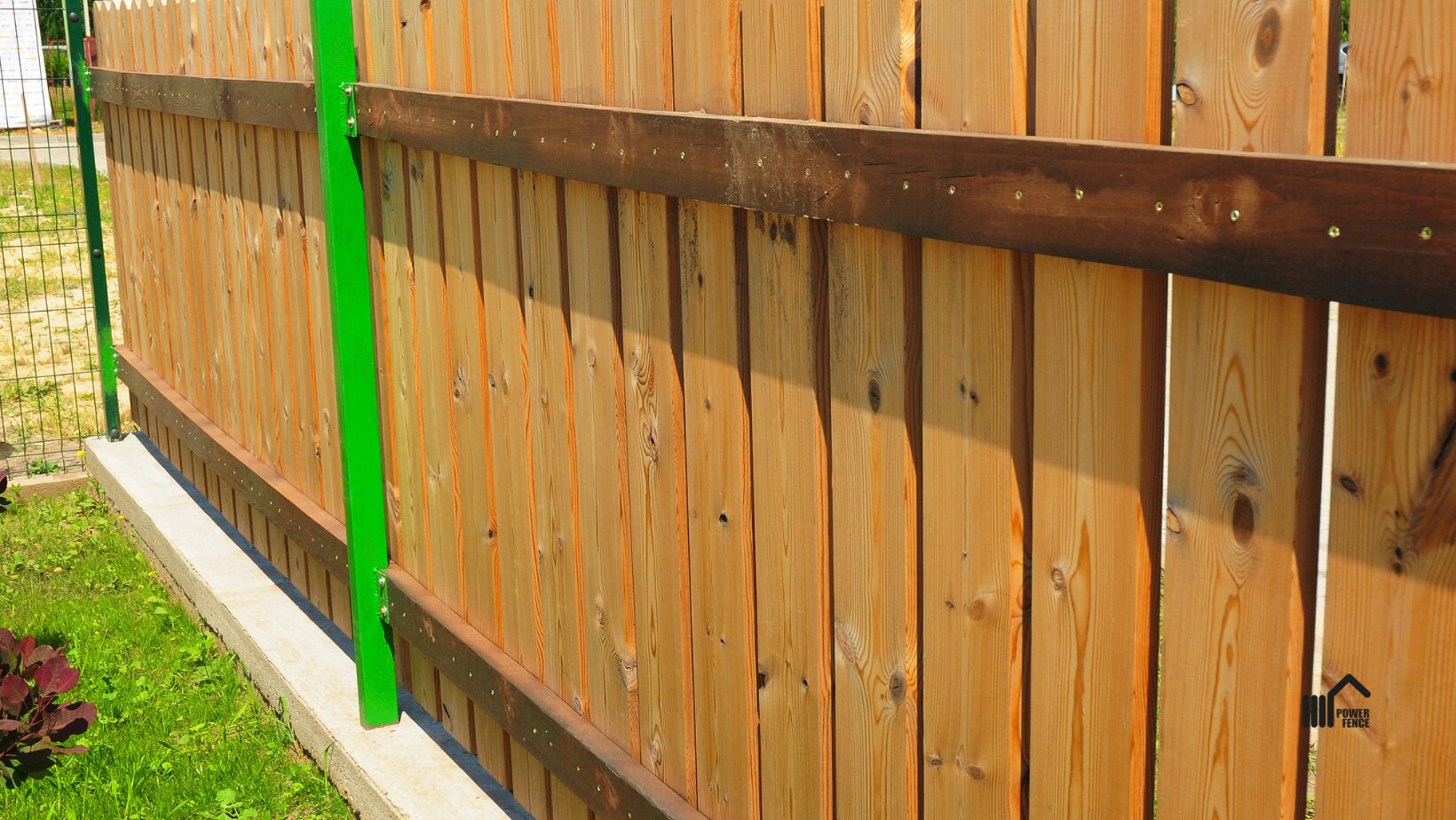Latest Trends in Outdoor Spaces from a Talented Deck Builder
Latest Trends in Outdoor Spaces from a Talented Deck Builder
Blog Article
Just How to Determine Typical Problems That Require Immediate Fence Repair
When it concerns preserving your fencing, it is vital to find issues prior to they come to be bigger troubles. Regularly looking for signs of decaying timber, leaning panels, or corrosion can save you money and time in the future. You may not understand just how weather and pests can compromise your fence's stability. Allow's discover the typical signs that indicate your fencing requires prompt attention, so you can keep your property safe and secure and looking its finest.
Indicators of Rotting Wood in Wooden Fences
Have you observed your wooden fence looking a little bit worse for wear? It could be time to check for signs of decaying wood if so. Check out the base of the messages and panels for soft places. If you push on the timber and it really feels spongy or crumbles, that's a clear indicator of rot. Next, search for discoloration or dark places on the timber-- these frequently signal wetness damage. Take notice of any kind of peeling off paint or finish, as this can expose the wood to additional decay. Additionally, a pungent, musty smell can show fungal development. Don't forget to inspect links and joints; if they hang or crumbling, the wood below is most likely endangered. By capturing these indications early, you can protect against more comprehensive damage and keep your fence standing solid. Regular upkeep is essential to prolonging the life of your wood fence.
Leaning or Tilting Fence Panels
If you've observed your fence panels leaning or turning, it's vital to comprehend what caused it. This problem could suggest underlying structural damages that needs your interest. Allow's discover the usual reasons and the repair work alternatives offered to get your fence back fit.

Root Causes Of Leaning Panels
It's frequently a sign of underlying issues that need dealing with when you observe your fencing panels leaning or turning. One typical reason is poor drain; extreme water can wear down the dirt around the fencing articles, compromising their support. An additional perpetrator can be strong winds or storms that push against the panels, especially if they're not correctly anchored. Furthermore, the all-natural settling of dirt in time can create articles to move, bring about a tilt. Insects, like termites, can jeopardize the honesty of wooden panels, triggering them to lean also. Bad setup methods may result in panels not being safely set, leaving them prone to leaning under stress. Address these issues immediately to keep your fence's stability.
Signs of Architectural Damages
Noticing turning or leaning fence panels can be worrying, as these problems commonly indicate architectural damages that requires immediate focus. When your fencing starts to lean, it may indicate that the messages are moving or that the soil around them has actually eroded. Pay attention to voids between articles or panels, as these can likewise suggest instability. deck builder. Furthermore, check for cracks or splintering in the wood, which can compromise the total structure. If you observe corrosion or rust on metal parts, it might jeopardize the stability of the fencing. Remember, ignoring these indications can bring about a lot more serious damage down the line, so it's vital to analyze the scenario without delay and do something about it before it worsens
Repair Service Options Available

Corrosion and Deterioration in Steel Fences
If you possess a metal fence, you might observe rust and rust sneaking in in time, particularly if it's revealed to wetness. These concerns not only influence the look of your fencing yet can additionally jeopardize its architectural stability. To identify rust, look for reddish-brown areas or patches, which indicate the steel is oxidizing. Deterioration can spread swiftly if left untreated, leading and damaging the fence to expensive repairs.To take on rust and rust, you should clean the affected areas with a wire brush and use a rust-inhibiting guide. When the primer dries out, take into consideration painting the fencing with a weather-resistant paint to protect it further. Normal maintenance, such as evaluating for signs of corrosion and repairing paint as required, will certainly assist expand your fencing's life-span. Attending to these concerns Going Here immediately ensures your metal fence continues to be solid and visually appealing for many years to find.
Fractures and Divides in Plastic Secure Fencing

Sources Of Vinyl Damage
Plastic fencing is preferred for its toughness, yet it can still suffer from splits and divides as a result of numerous elements. One significant cause is severe temperature level fluctuations. When vinyl increases in the heat and contracts in the chilly, it can weaken the product over time. Additionally, direct exposure to harsh sunshine can result in UV deterioration, making the vinyl breakable. Physical influences, like unexpected accidents or heavy branches, can also create fractures. Poor setup or utilizing low-grade materials can exacerbate these issues. Moreover, age plays a role; older plastic fence is extra prone to damage. Normal evaluations can help you determine these elements prior to they cause substantial problems. Take positive actions to assure your fence remains intact and strong.
Repairing Cracks Effectively
Cracks and splits in your plastic fence can be concerning, addressing them promptly can protect against additional damage and maintain the fencing's look. Evaluate the size of the fracture. For small fractures, a vinyl repair kit typically includes sticky that can bond the edges, offering a smooth fix. Tidy the area completely before using the sticky, ensuring it sticks effectively. For bigger divides, you may require to utilize a vinyl spot. Cut the patch to size, use adhesive around the edges, and press it securely onto go to the website the split. Allow it to cure based on the maker's instructions. Normal upkeep and fast repair services can extend your fencing's lifespan, keeping it looking wonderful for several years ahead.
Loosened or Missing Fence Articles
Loose or missing fence blog posts can threaten the security of your whole fencing framework. If you discover any kind of blog posts leaning or wobbling, it's important to deal with the problem quickly. Inspect for any indications of activity, as this can bring about further damage in time. You can quickly evaluate the problem by providing each article a mild shake-- if it feels unstable, it's time to take action.For missing blog posts, you'll need to change them asap to maintain your fence's honesty. When you set up new blog posts, ensure they're securely anchored in the ground with concrete or gravel for included stability. If an article hangs, tighten it by including extra assistance or driving it deeper right into the ground.Ignoring these concerns can cause larger issues, like spaces in your fencing and even complete collapse. So, maintain an eye on your messages and stay proactive regarding repair work!
Damages From Weather Condition and Natural Environment
Weather condition and all-natural aspects can wreak mayhem on your fence, resulting in different forms of damages that call for prompt interest. Heavy rain can create wood to rot, making it weak and unstable. Snow build-up might flex or break panels, while solid winds can root out fence messages or trigger areas to lean.If you observe cracks or splintering in wooden fencings, look at here it signifies drying out because of intense sun exposure. Metal fences can corrosion if protective coatings put on off, particularly in humid or coastal areas.Inspect your fencing consistently after storms or severe weather to catch any type of damage early. Attending to these concerns promptly can conserve you from expensive repairs down the line. Don't wait up until a tiny trouble turns into a significant one; remain positive and maintain your fencing in top shape to keep both capability and aesthetic charm.
Pest Problem and Termite Damages
When you observe indicators of bug infestation or termite damage, it's vital to act swiftly to avoid more devastation. Look for mud tubes along your fence or hollow-sounding wood, as these suggest termites go to work. You may additionally see small holes or frass, which is termite droppings appearing like sawdust. If you find any one of these indicators, it's time to assess the damage.Don' t delay up until it's too late; insects can jeopardize your fence's integrity. Inspect the surrounding area for ants or beetles, as they may be adding to the trouble. If you believe an invasion, consider getting in touch with a bug control professional to treat the issue.repairing and confirm or replacing afflicted sections of your fence promptly not just restores its stamina however also protects against pests from spreading further. Keep vigilant to keep your property pest-free and protected.
Often Asked Questions
Just how Typically Should I Check My Fencing for Damage?
You should examine your fence at the very least two times a year, preferably during springtime and autumn. Regular checks help you spot damage early, saving you time and money on repair services while maintaining your property's look and security.
Can I Repair a Fence Myself or Hire an Expert?
If you have the right devices and skills, you can most definitely fix a fencing on your own. Nevertheless, working with an expert guarantees high quality job and saves you time, specifically for complex repair services or substantial damage.
What Equipment Are Needed for Standard Fence Repair Work?
For fundamental fencing repair services, you'll require tools like a hammer, screwdriver, pliers, a saw, a degree, and determining tape. deck builder. Relying on the repair work, you may additionally need nails, screws, or replacement boards
Just How Much Does Fencing Fixing Normally Price?
Fencing repair service expenses vary widely, but you can anticipate to pay between $200 and $1,500 depending on products, labor, and degree of damage. It's wise to get numerous quotes for the very best offer.
When Is the very best Season for Fence Fixes?
The very best time for fencing fixings is during light weather, commonly in spring or early fall. You'll stay clear of severe temperature levels, making it less complicated to function and guaranteeing the materials set correctly for lasting resilience (deck builder). Observing leaning or turning fence panels can be startling, as these problems usually suggest structural damages that needs instant interest. Loosened or absent fence posts can undermine the security of your whole fencing framework. Snow accumulation might bend or break panels, while strong winds can uproot fencing messages or cause areas to lean.If you notice splits or splintering in wooden fencings, it's a sign of drying out due to intense sunlight direct exposure. Steel fencings can corrosion if protective coverings wear off, specifically in coastal or humid areas.Inspect your fence frequently after storms or severe weather condition to capture any damages early. Fencing repair work costs vary widely, yet you can expect to pay between $200 and $1,500 depending on materials, labor, and degree of damages
Report this page